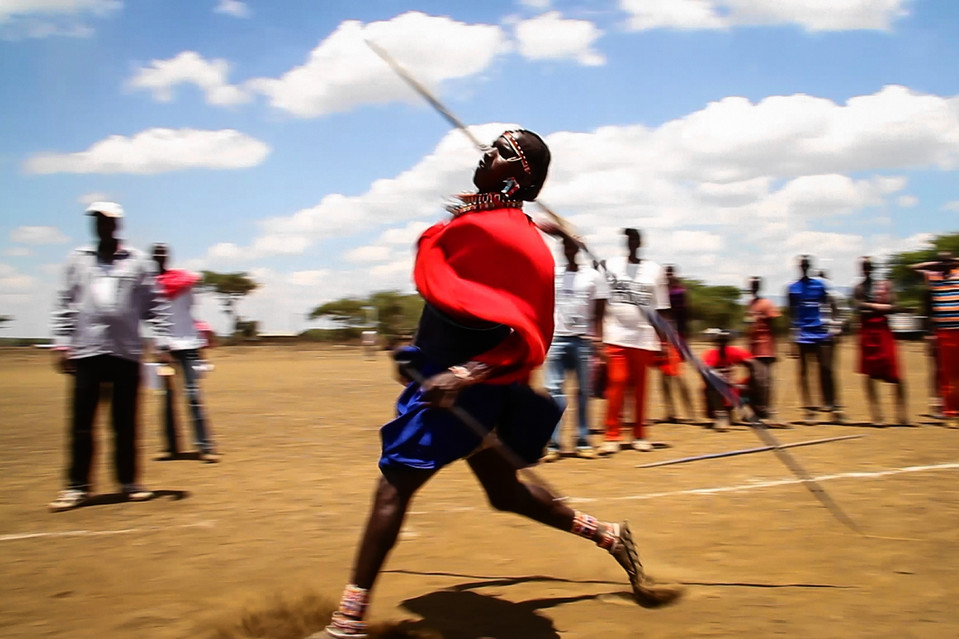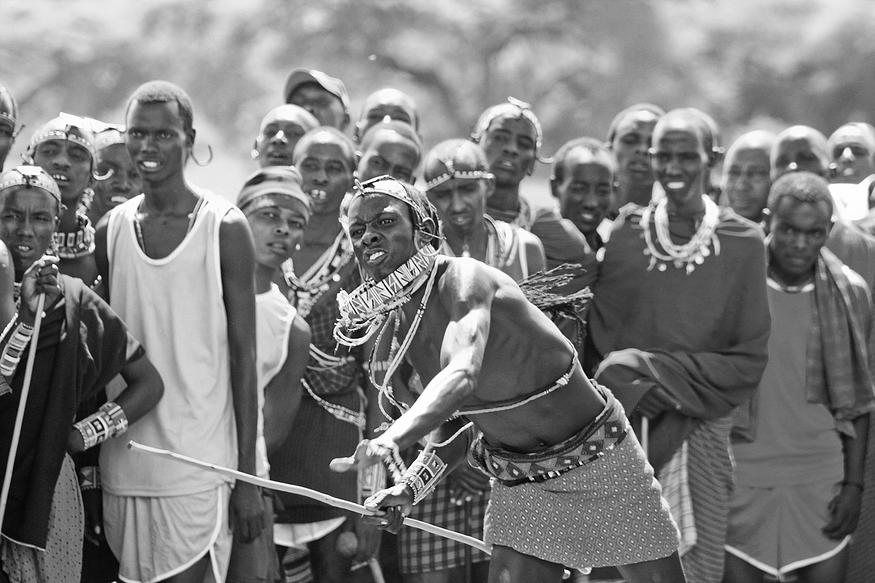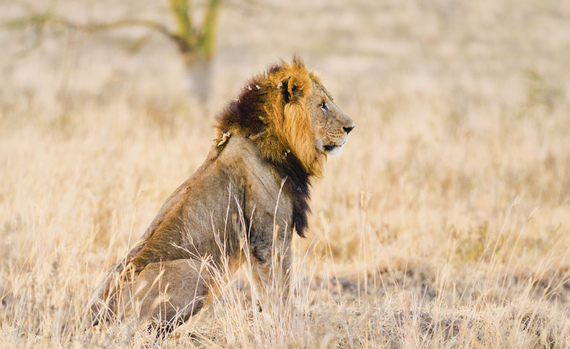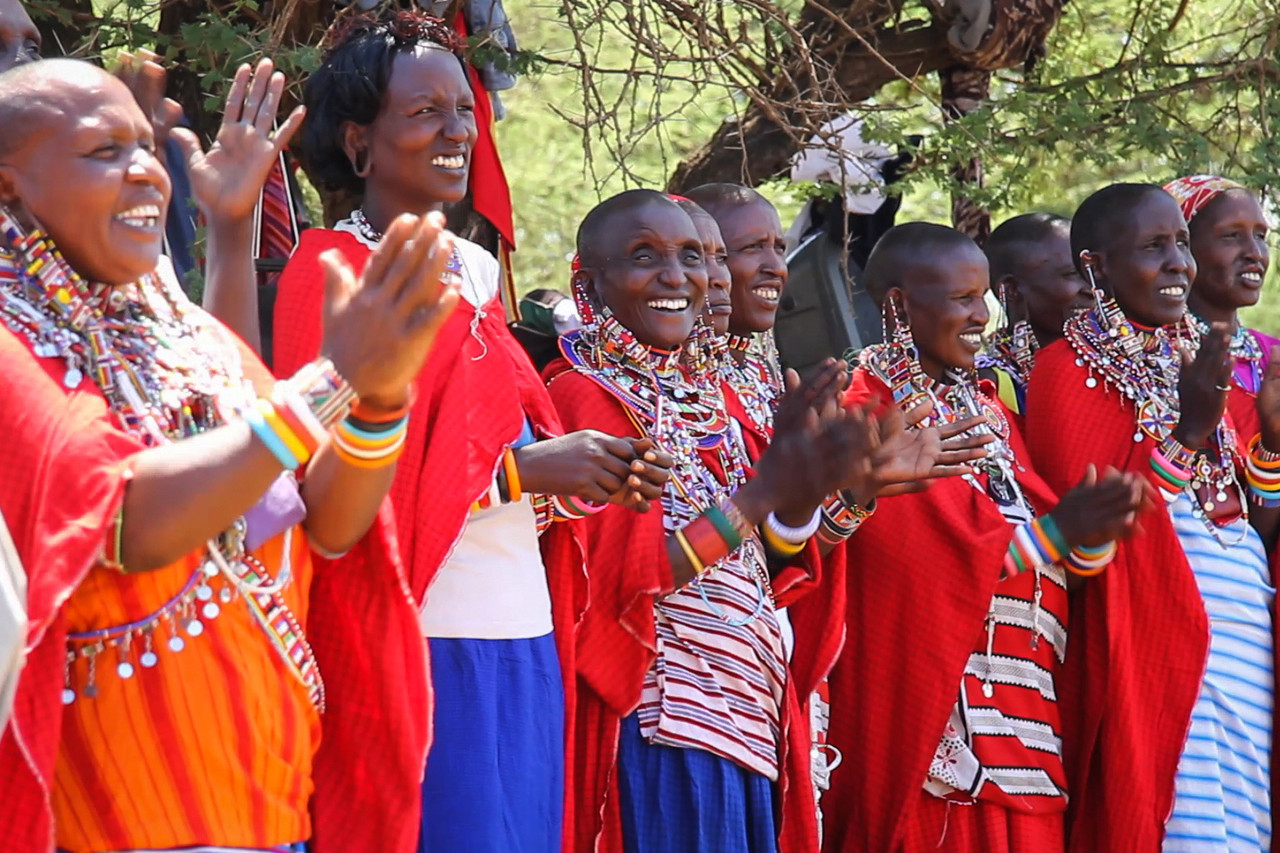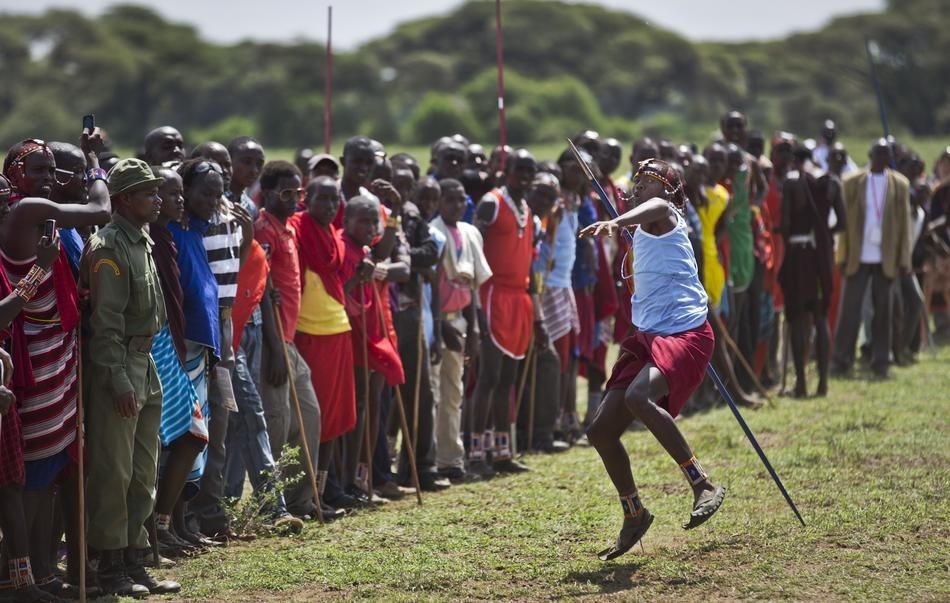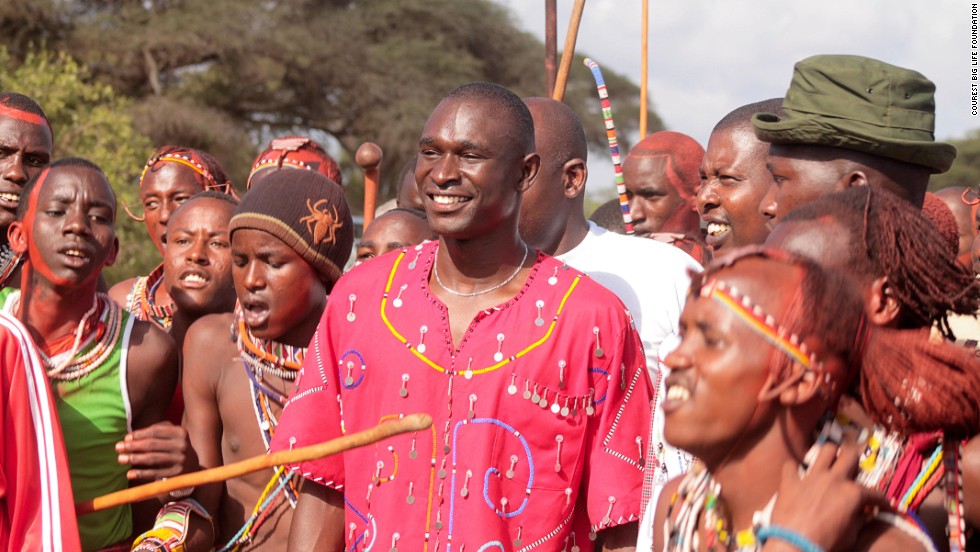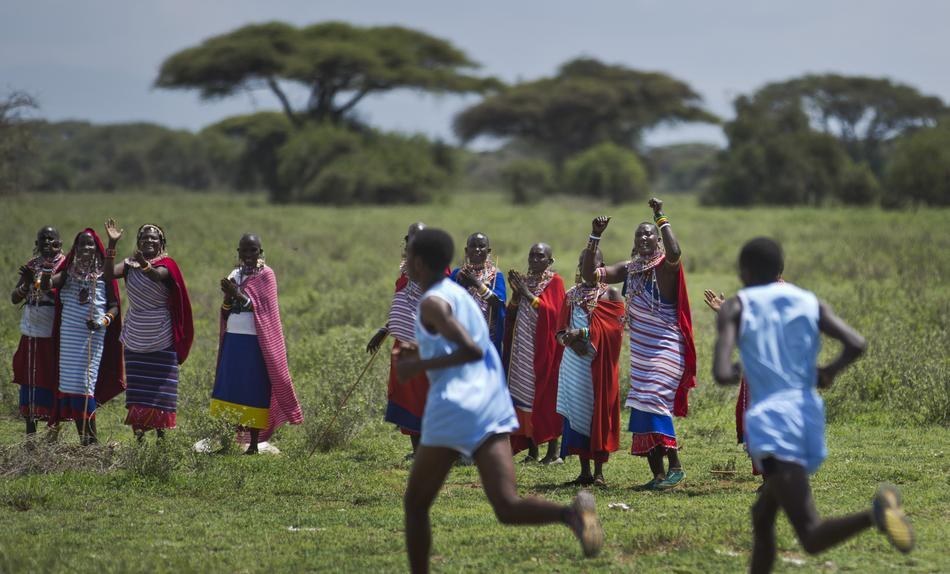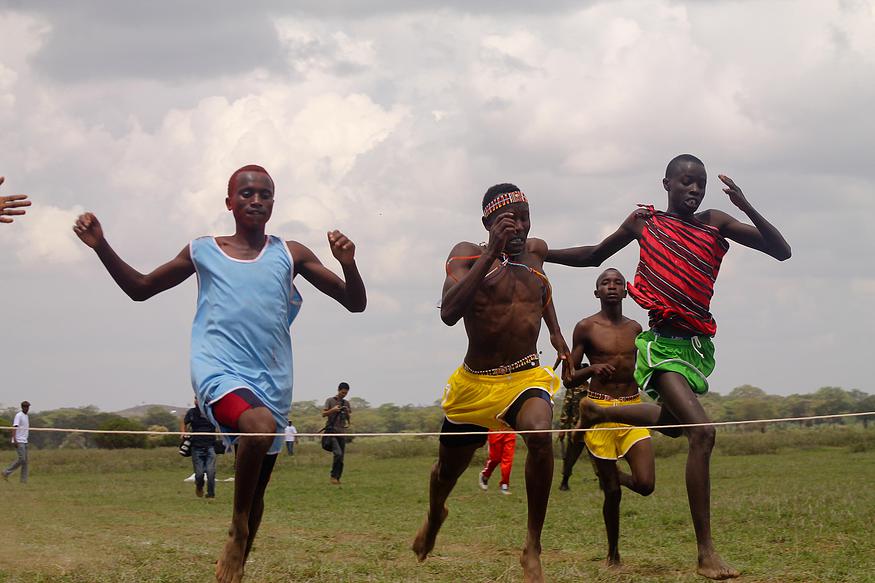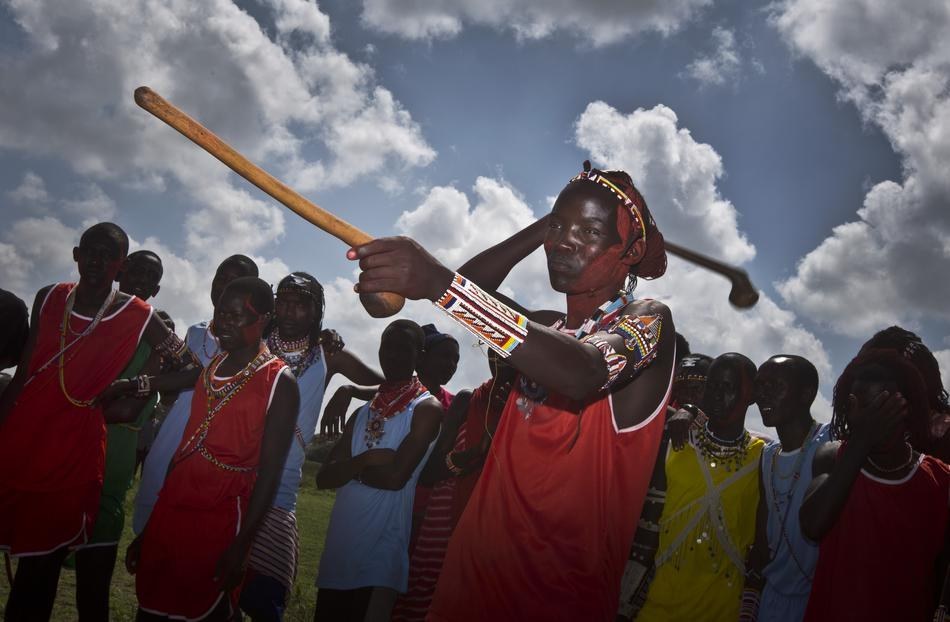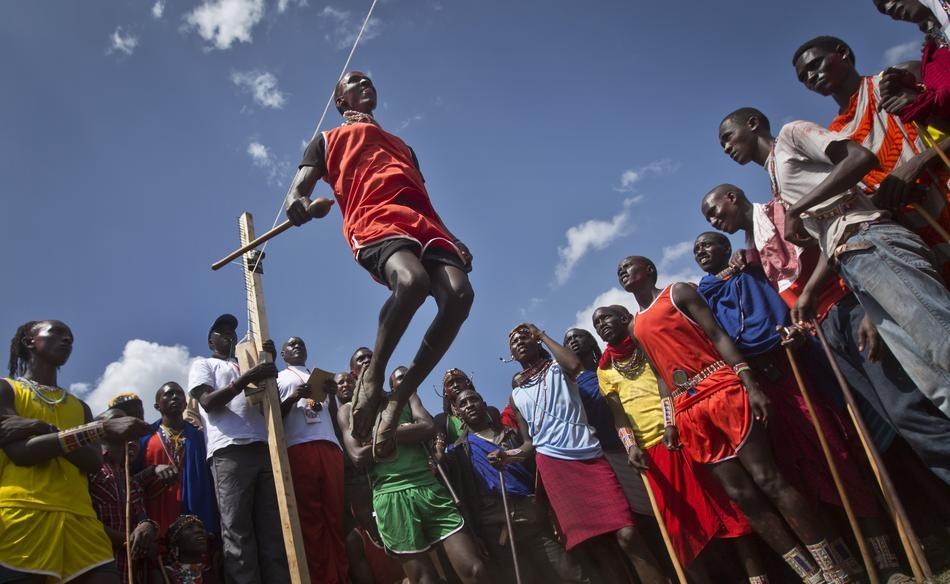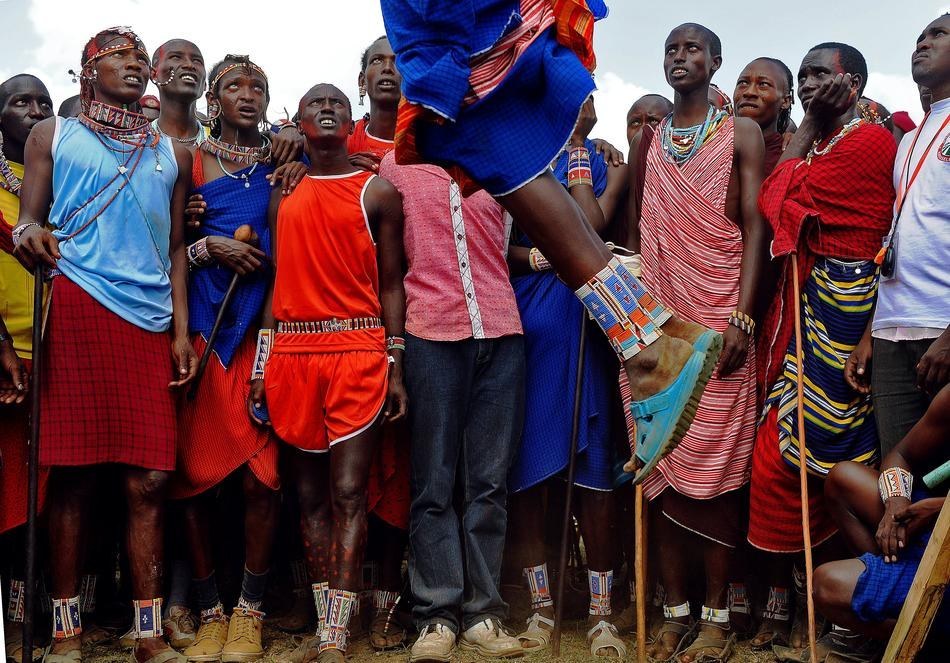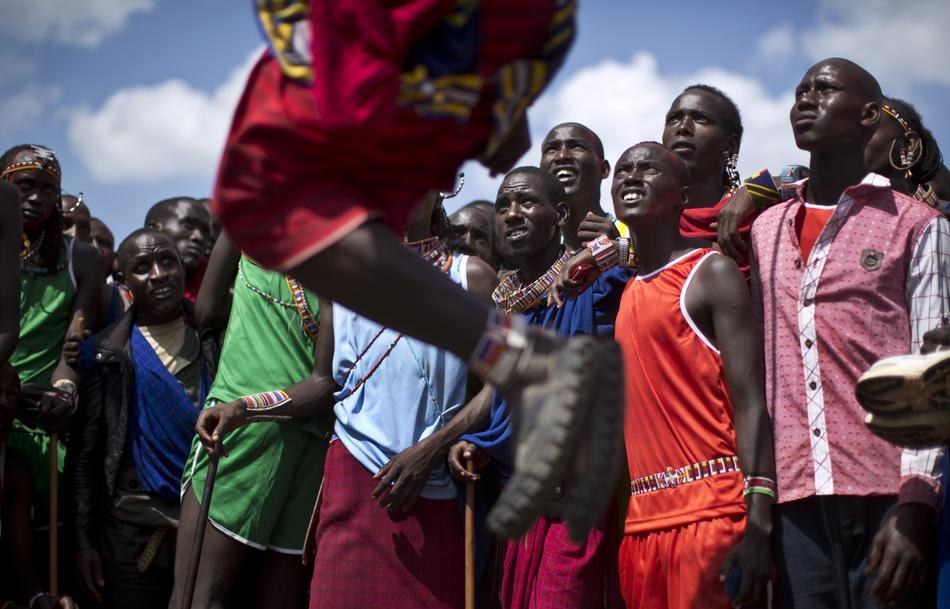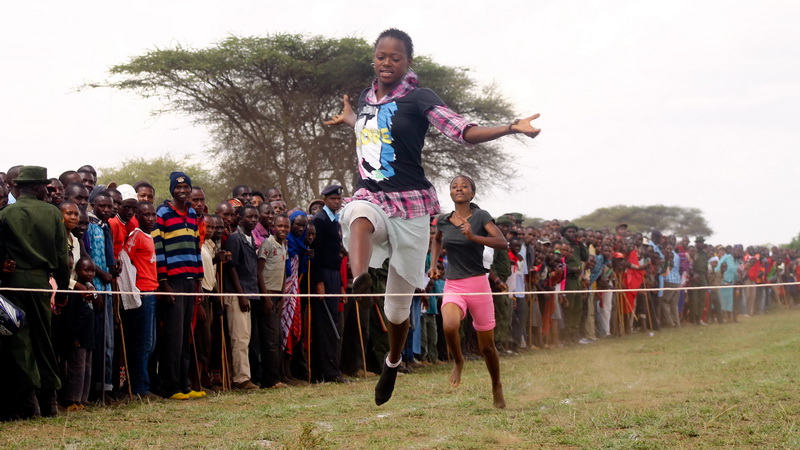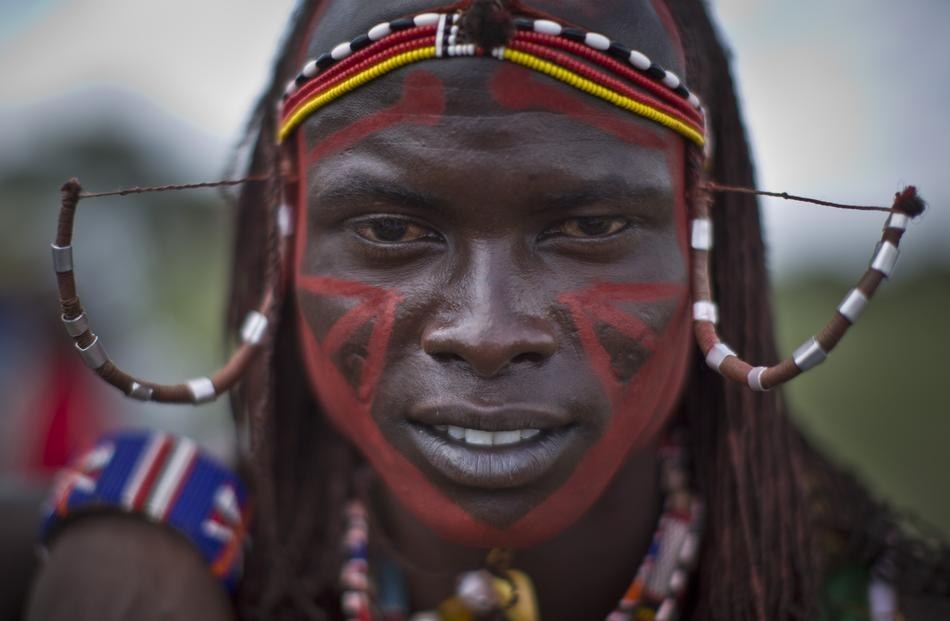[PHOTOS] From Hunting Lions To Hunting Medals, The Iconic Maasai Tribe Has Come A Long Way
On Saturday, 13 December 2014, the Maasai Olympics took place in Kimana, three hours south of Nairobi, Kenya, in which young Maasai warriors proved their bravery, skill and manhood by competing for medals instead of through hunting lions.
Before 2012, when a young Maasai hurled his spear, his target would be an engaji (a lion). Now, a Maasai, in order to become a murran (a warrior), hunts for glory in an athletic contest that has transformed the Maasai people's relationship with Kenyan wildlife.
For centuries, the Maasai tribes, who are among the most iconic tribes in Africa, have hunted lions. This age-old tradition has a historic significance, representing the rite of passage from adolescence into manhood for young Maasai. Killing a lion earned a Maasai "lion name," as well as the attention of young women.
In past, lion hunting was also carried out for the practical purpose of protecting the Maasai people's valuable livestock. But with a sharp drop in the lion population and an increasing number of people living in the area, something had to be done to preserve the big cats as well as the customs of these semi-nomadic people.
Enter Maasai Olympics, a collective effort of local elder groups and the Big Life Foundation, a conservation group. Having made a successful debut in 2012, the second installment took place at the base of Mount Kilimanjaro, Tanzania, on 13 December this year.
Athletes competing in the 2012 Maasai Olympics, which featured events such as the javelin throw and the high jump.
Image via Beverly Joubert/WSJNarrating from his personal account, George Rush of the Wall Street Journal, shares how the Maasai Olympics came to be:
The warriors' mothers—the only women allowed to live in the manyatta, a community of warriors—about 15 to 25 years in age—who live together for several years.
Image via wsj.netSince 2003, Maasai leaders in the 2-million-acre Amboseli-Tsavo ecosystem, which straddles Kenya and Tanzania, had been working with conservationists Richard Bonham and Tom Hill on a program that bought lions a reprieve by paying herders for lost livestock. But other killing continued; how would young Maasai become men if they couldn’t hunt lions?
“One day, in 2008, eight elders arrived unannounced at my house in Kenya,” recalled Mr. Hill, an American entrepreneur who fell in love with the country while documenting African rock art in 1996. “Their spokesman said, ‘Over 4,000 boys will soon be coming of age. We want to end lion hunting. But we have to create an alternative.’”
It was a tricky proposition. Traditionally, the warrior age has been a time of adventure, said Mr. Bonham, a Kenyan game-hunter-turned-conservationist. “The young men had heard their fathers’ stories and songs about the lion hunt. So we needed to maintain the cultural thing, but replace it with something that wasn’t boring.”
By 2012, local meets had been organized by the Big Life Foundation, a conservation group that Messrs. Bonham and Hill run with British photographer Nick Brandt. That year, David Rudisha —a Maasai—won the 800-meters race at the real Olympic Games in London, setting a world record. Mr. Rudisha thrilled the murran by coming to the first Maasai Olympics. He also volunteered to help the local 5,000-meter winner, Jacob Lemaron, train for the 2013 New York City Marathon.
“New York City was very different than any place I’d seen before,” Mr. Lemaron told me. “It was very cold, but I stayed warm by running.”
As Samar Ntalamia, head of programs at the Big Life Foundation, describes, the Maasai Olympics is part educational program, part cultural necessity, CNN reported in its Inside Africa series
"This series of events is intended to provide young men with an outlet for demonstrating physical prowess and leadership, where previously this was achieved through killing lions," Ntalamia said.
"It also provides a forum to engage and educate these young men and their communities around conservation issues."
"The most popular events for athletes and spectators are the high jump, the 200 meters and 800 meters races and the javelin," Ntalamia said.
So, on 13 December 2014, when 18-year-old Tipape Lekatoo, with ochre smeared on his cheeks, a javelin in his right hand and an intense gaze in his eyes, looked ready to hunt and hurled the javelin deep into the veldt, there was no risk of impaling a lion. Instead, his aim was to win a gold medal at the Maasai Olympics.
Instead of using spears to hunt big cats, the Maasai now compete by throwing javelins.
Image via Ben Curtis/AP Photo"If I win, I will spend all the prize money to pay for my university education," said Lekatoo, a sinewy 6 foot 3 inch warrior who dreams of studying tourism management in the Kenyan capital Nairobi.
Lekatoo's first throw of 47 metres won him praise from team mates and whoops from Maasai girls garlanded with garish beads and patterned crimson shukas, or cloaks.
Like many other Maasai boys on the cusp of manhood, Lekatoo no longer believes that following the ancient Maasai ritual of killing a lion is the only way to become a murran (a warrior). And this point has been hammered home by David Rudisha, Kenya's Olympic 800 meters champion and the world's most famous Maasai.
Here, Kenyan 800 meters gold medal winner at the 2012 Olympic Games in London, David Rudisha (himself a member of the Maasai ethnic group and patron of the Maasai Olympics) meets competitors.
Image via turner.comThe Maasais will be the biggest losers if the lion becomes extinct, Rudisha repeatedly told the throng of Maasai youth who are entering the job market where tourism-related work is their best chance of employment.
"Killing of wild animals is not going to benefit us in any way," Rudisha told Reuters, as zebras and elephants roamed on the horizon.
The concept of Maasai Olympics is such that it features a total of six competitions which are primarily based on traditional Maasai warrior skills. One of them is Track events for male competitors, which include the 200 metre, 800 metre and 5,000 metre run.
And the legendary warrior style Maasai vertical jump in which warriors leap high into the air from a standing position
There are competitions for female competitors too, consisting of the 100 meters and 1,500 meters. They also sing and dance.
"The Maasai women been very positively receptive and happily support the whole idea of the Maasai Olympics," Ntalamia explained.
"(It) has provided an opportunity for their sons (warriors) to not only escape lion injury and at times death when hunting lions, but this program has also provided an opportunity for their sons to play a role in the conservation of one of the key community resources -- wildlife. The program also presents opportunities for their sons to gain economically through winning of prizes, as well as opportunities for fame through sports," he added.
Ten years ago, there were fewer than 10 lions in the Amboseli-Tsavo region, reports WSJ. Now, thanks in part to compensation programs and the Maasai Olympics, the Kenya Wildlife Service estimates there are 70 to 120 lions. Phillip Morinke, one of the many Maasai warrior, did not mind that he hadn't gotten a lion name. "I prefer athletics to killing wild animals," he said.
